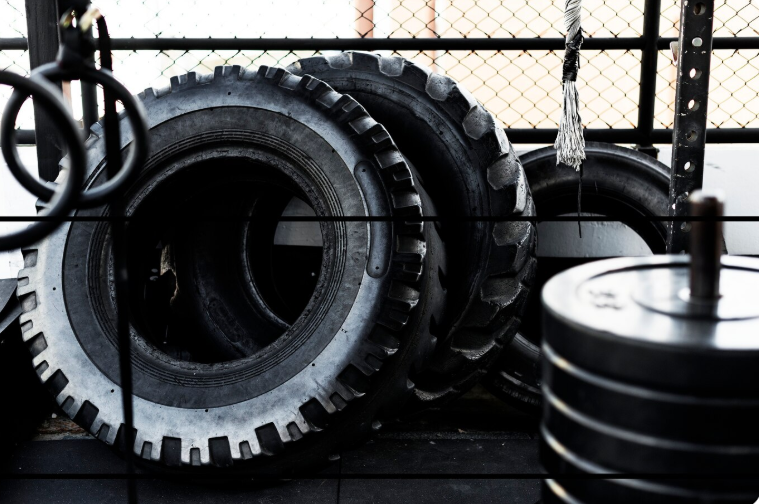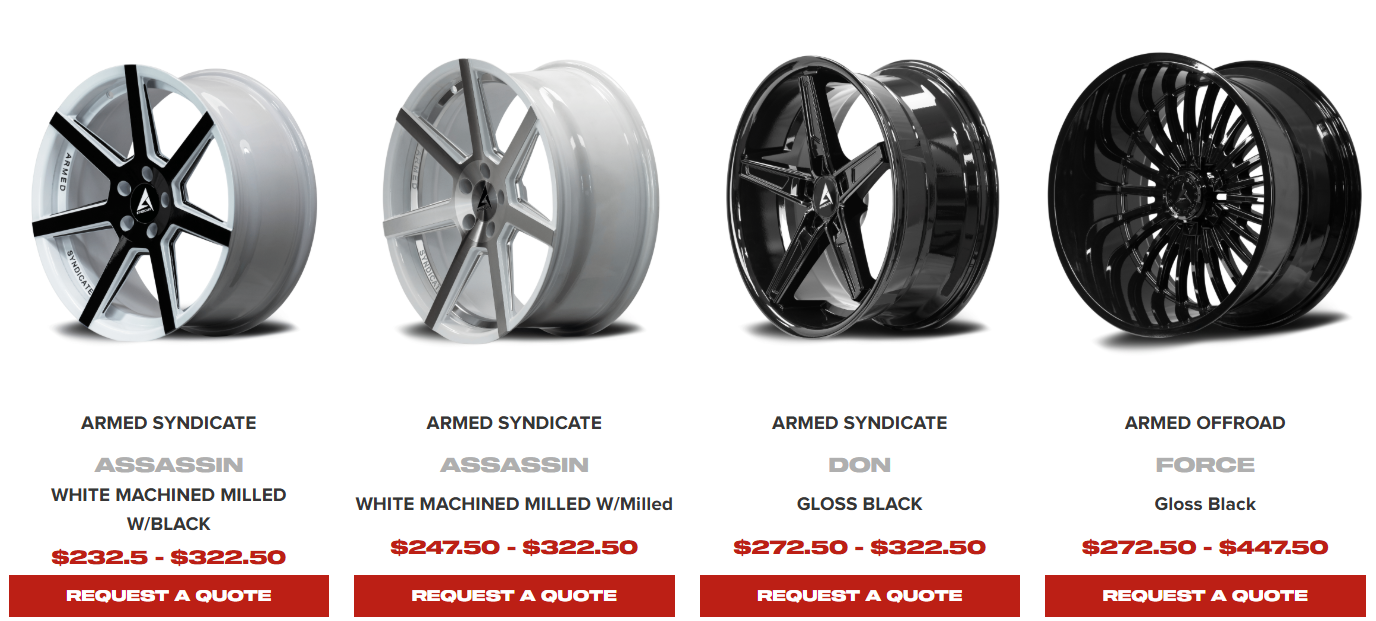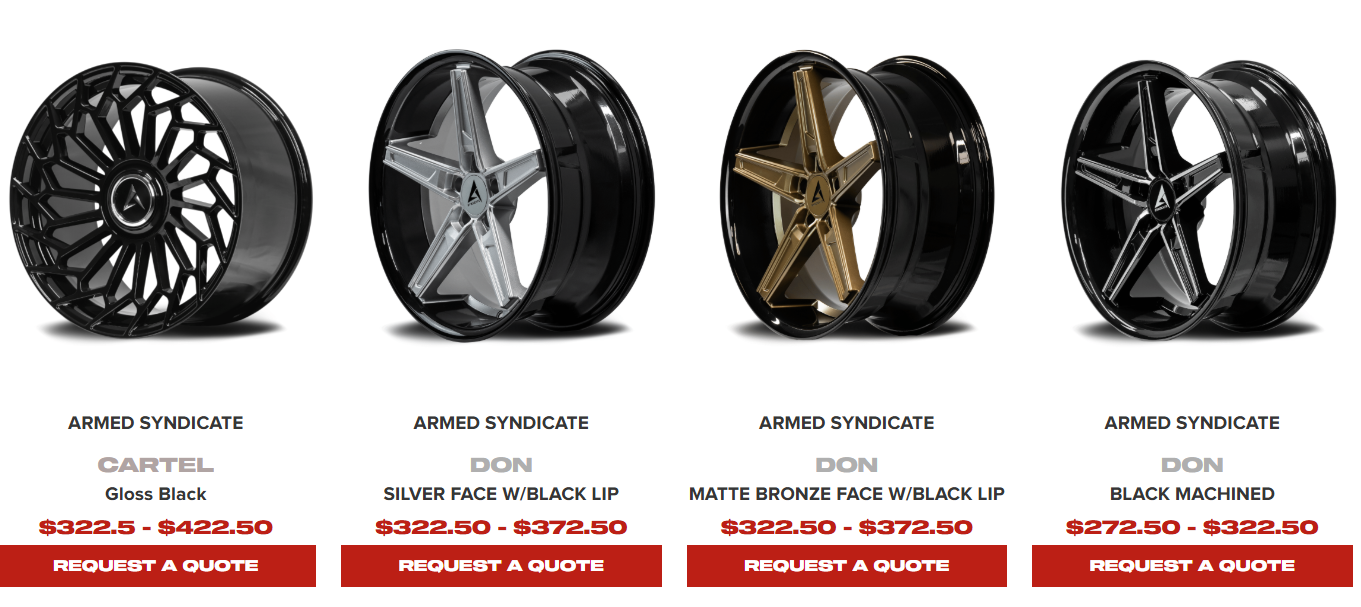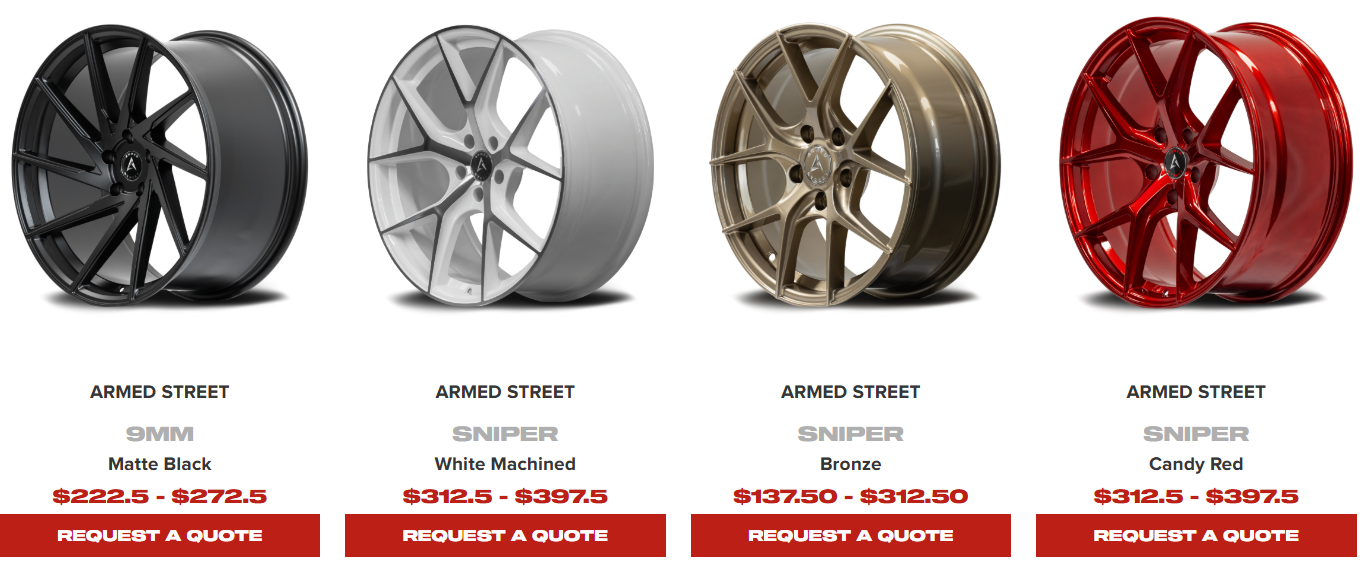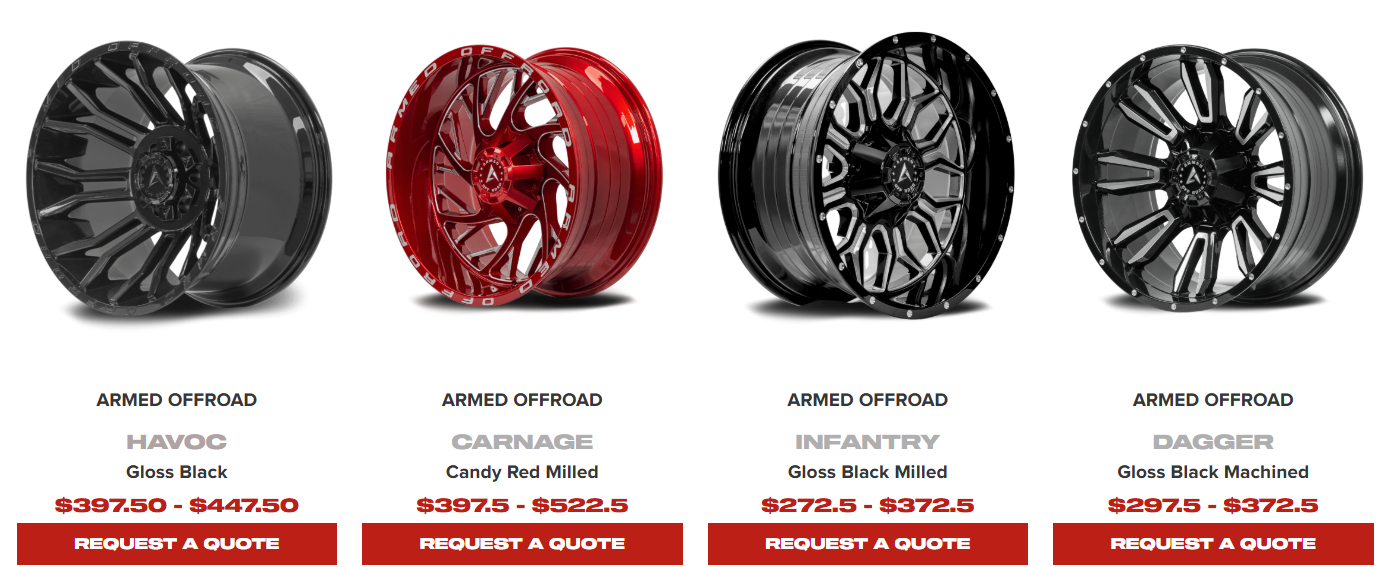Choosing the right tires and rims for off-road vehicles in Canada isn’t just a matter of aesthetics - it’s about safety, control, terrain compatibility, and surviving the harshest elements the Canadian wilderness can throw at you. Whether you’re trekking through muddy trails in British Columbia, navigating rocky terrain in Alberta, or ploughing through deep snow in Northern Ontario, your off-road setup needs to be purpose-built.
In this guide, we’ll break down everything you need to know about selecting the best off-road tires and rims for Canadian conditions. We’ll discuss the different types, their strengths, and what to consider before you make your purchase. For expert advice and a massive selection of top-quality off-road products, visit Canada Custom Autoworks, your go-to source for off-road tires, wheels, and upgrades.
Understanding Off-Road Tire Types
Off-road tires come in several categories, each tailored to specific terrains and driving styles. The most common types include All-Terrain (A/T), Mud-Terrain (M/T), and Hybrid or Rugged-Terrain (R/T) tires. Each has unique tread patterns, rubber compounds, and sidewall designs meant to perform in specific off-road conditions.
- All-Terrain (A/T) tires are ideal for drivers who split their time between paved roads and off-road trails. They offer a balanced blend of comfort, traction, and noise control.
- Mud-Terrain (M/T) tires are built for extreme conditions such as deep mud, rocks, and aggressive slopes. They feature large, open tread blocks that clear debris quickly.
- Hybrid/Rugged-Terrain (R/T) tires bridge the gap between A/T and M/T, providing off-road performance with slightly better on-road manners than a full M/T tire.
Expert Tip from Canada Custom Autoworks:
"If your vehicle is your daily driver and weekend warrior, go with hybrid or A/T tires. For dedicated trail rigs, M/T tires are the way to go."
The Role of Rims in Off-Road Performance
Many off-road enthusiasts focus only on tires, but rims play an equally critical role. Off-road rims need to handle heavy impacts, harsh conditions, and fluctuating tire pressures. Materials matter here: steel rims are tough and affordable, making them a favourite for rock crawlers, while alloy rims are lighter and stylish, often preferred by overlanders and weekend adventurers.
You also need to consider rim width and diameter. Wider rims can support larger, more aggressive tires, but they can also expose the sidewall to more damage. Smaller-diameter rims with taller tires are often better for crawling and snow conditions.
Offset and backspacing affect your suspension clearance and how far the wheels stick out. Be cautious with changes - an incorrect offset can stress components or cause rubbing.
How to Choose the Right Tire and Rim Fitment Combination?
Fitment is everything. The wrong combination of tire size, rim width, and offset can ruin handling, cause rubbing issues, and even lead to mechanical failures. It’s not just about looks - your tires and wheels must be compatible with your suspension, brakes, and vehicle load rating.
Canada Custom Autoworks offers professional fitment consultation and will ensure the setup you choose is optimised for your specific vehicle. Whether you’re outfitting a lifted Jeep, a Tacoma with a levelling kit, or a fully built Ram 1500, they’ll help you avoid costly mistakes.
| Type | Ideal Use Case | Strengths | Considerations |
| All-Terrain Tires | Mixed on/off-road use, light trail driving | Balanced ride, moderate off-road grip, quieter on road | May lack traction in extreme mud/snow |
| Mud-Terrain Tires | Rock crawling, deep mud, extreme trails | Aggressive grip, self-cleaning, tough sidewalls | Noisy on highways, less efficient on the road |
| Hybrid/Rugged Tires | Weekend warriors, mild to moderate off-roading | Good off-road grip, better manners than M/Ts | Pricier than A/T, not as tough as M/T |
| Steel Rims | Budget builds, rock crawling | Affordable, durable, easily repairable | Heavier, limited designs |
| Alloy Rims | Daily drivers, overlanding, style-conscious | Lightweight, stylish, better brake cooling | More expensive, can crack under impact |
Climate and Terrain Considerations in Canada
Canada’s terrain and weather vary drastically. From the snowy backroads of Quebec to the rocky hills of the Yukon, your tire and rim selection must match the challenges of your environment.
- Snowy and icy trails: Choose tires with siping and softer compounds. Taller sidewalls offer better grip in deep snow.
- Rocky terrain: Opt for tires with reinforced sidewalls and steel rims to withstand sharp impacts.
- Muddy conditions: Deep tread voids and self-cleaning lugs are crucial. M/T tires with beadlock rims may be ideal.
- Forests and logging roads: Hybrid tires on durable alloy wheels work best for mixed terrain with occasional obstacles.
Expert Tip from Canada Custom Autoworks:
"Always air down your tires to increase traction off-road, but make sure your rims can handle it. Beadlock wheels or reinforced rims are a must for hardcore adventures."
Additional Tips for First-Time Off-Roaders
- Don’t size up blindly: Bigger tires aren’t always better. They affect your speedometer, fuel economy, and suspension geometry.
- Look for load ratings: Off-road setups need to carry gear, passengers, and sometimes trailers. Check both tire and rim load capacities.
- Consider dual setups: Many Canadians use separate off-road and highway wheels to prolong tire life and maximise performance.
Where to Buy the Right Off-Road Tires and Rims?
When it comes to off-road upgrades, getting expert guidance makes all the difference. Canada Custom Autoworks offers top brands, aggressive styles, and professional consultations tailored to your vehicle and goals. Their seasoned team understands Canadian off-roading like no one else, and their shops across Western Canada make in-person service easy and accessible.
Whether you're upgrading a trail rig or building a weekend overland vehicle, Canada Custom Autoworks will help you do it right, without overpaying or compromising performance.
1. What’s the best off-road tire for snow-covered trails in Canada?
Hybrid or aggressive all-terrain tires with proper winter ratings are ideal. Look for the Three-Peak Mountain Snowflake (3PMSF) symbol for snow performance.
2. Can I use my stock rims for off-road tires?
Sometimes, yes, but only if they meet the width, offset, and load specs required by the new tires. Many off-road setups need stronger, wider rims.
3. Are beadlock rims legal in Canada?
DOT-approved beadlock rims are legal, but true beadlocks may not be road-legal in all provinces. They’re mainly used in off-road-only setups.
4. How often should I rotate my off-road tires?
Off-road tires should be rotated every 5,000 - 8,000 km to prevent uneven wear, especially if you're doing aggressive or uneven trail driving.
5. What size rim is best for off-roading?
Smaller diameter rims (15 - 17 inches) with taller sidewall tires are preferred for off-roading because they offer better traction and shock absorption.
Upgrade Your Off-Road Rig with Canada Custom Autoworks
Your off-road journey starts with the right gear. Whether you're venturing into the Rockies, cruising logging roads, or camping off-grid, Canada Custom Autoworks has the tires and wheels you need to get there safely and confidently. Explore their vast inventory, speak with an expert, and turn your rig into a true adventure machine.
